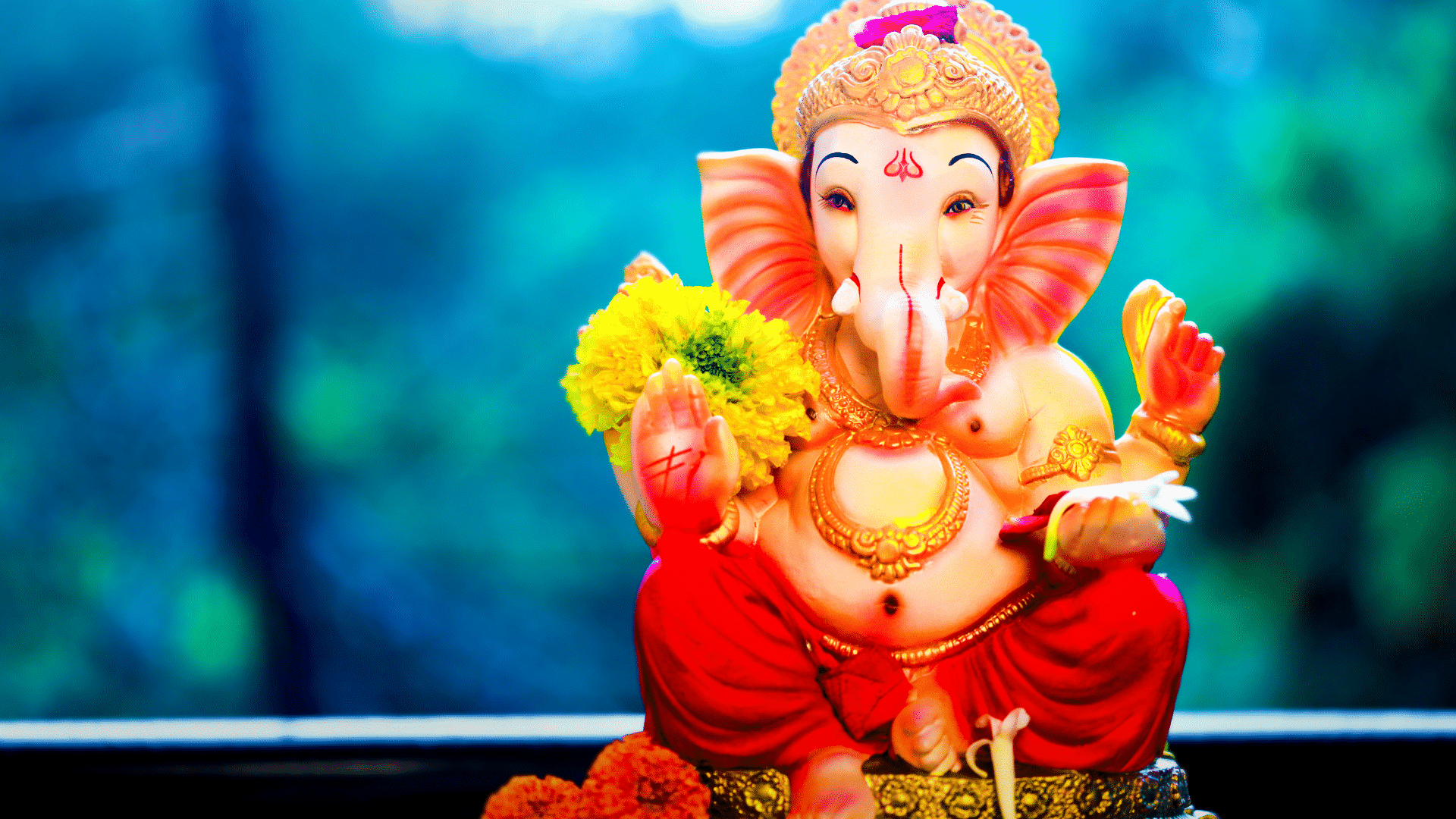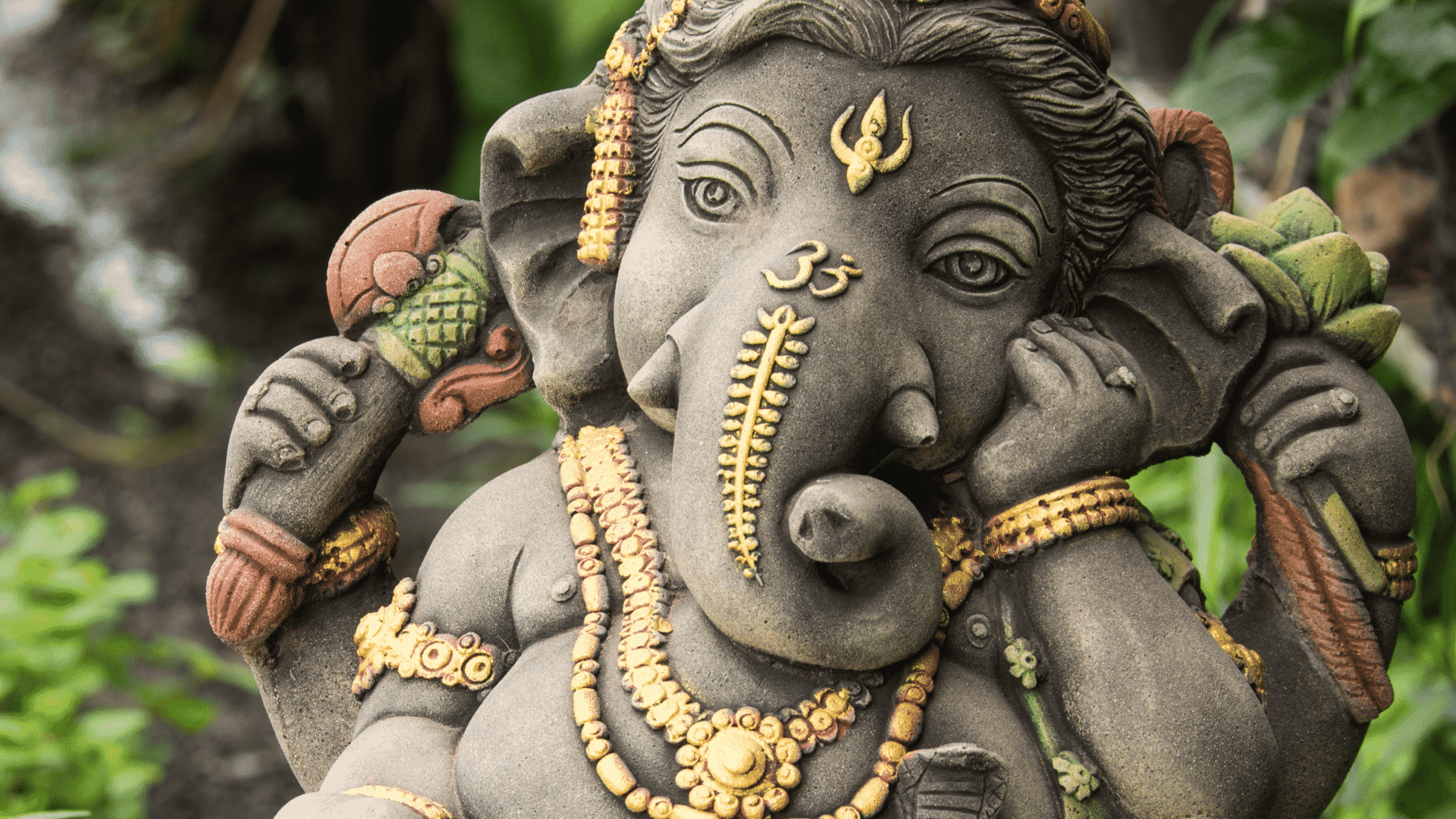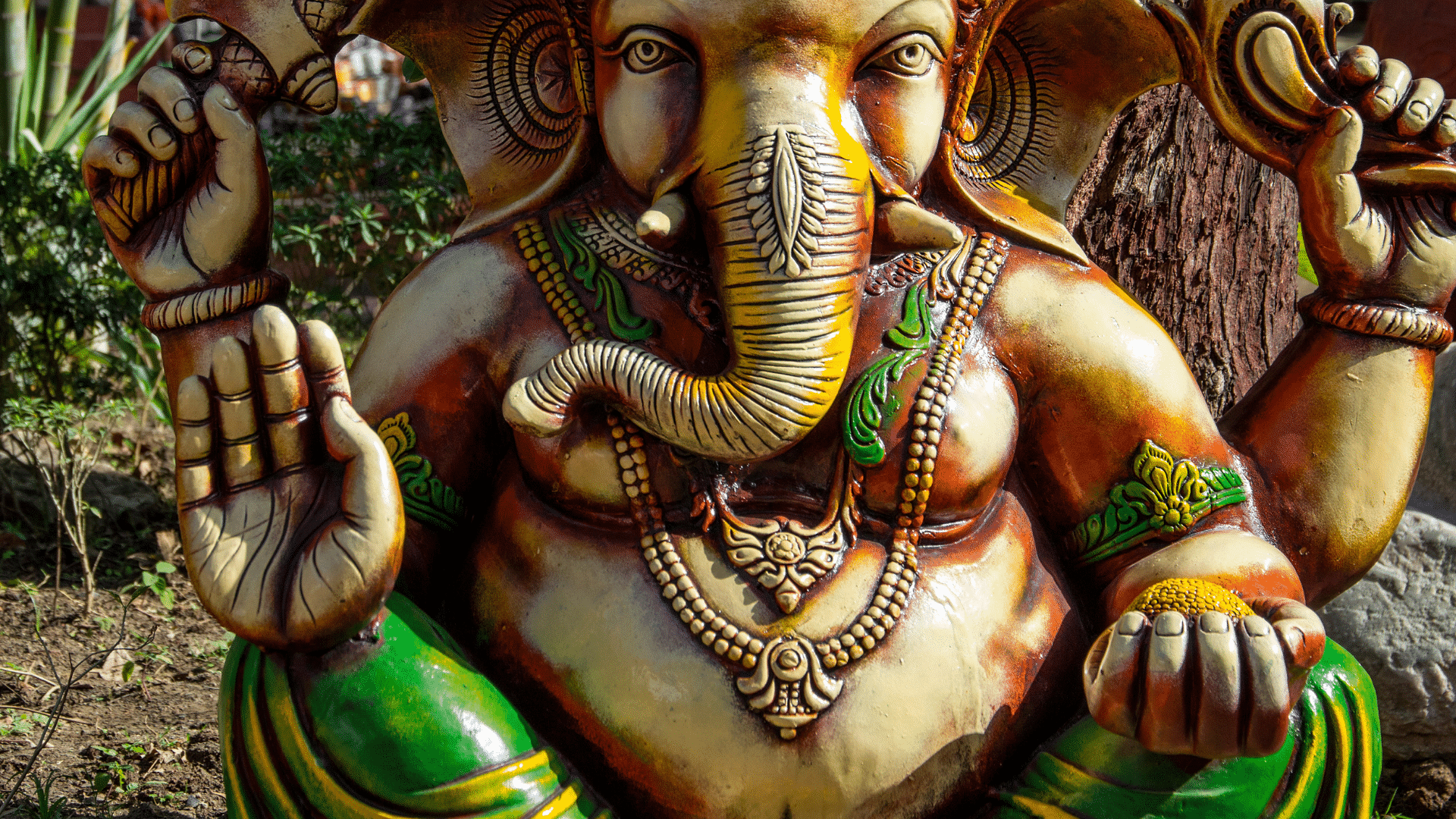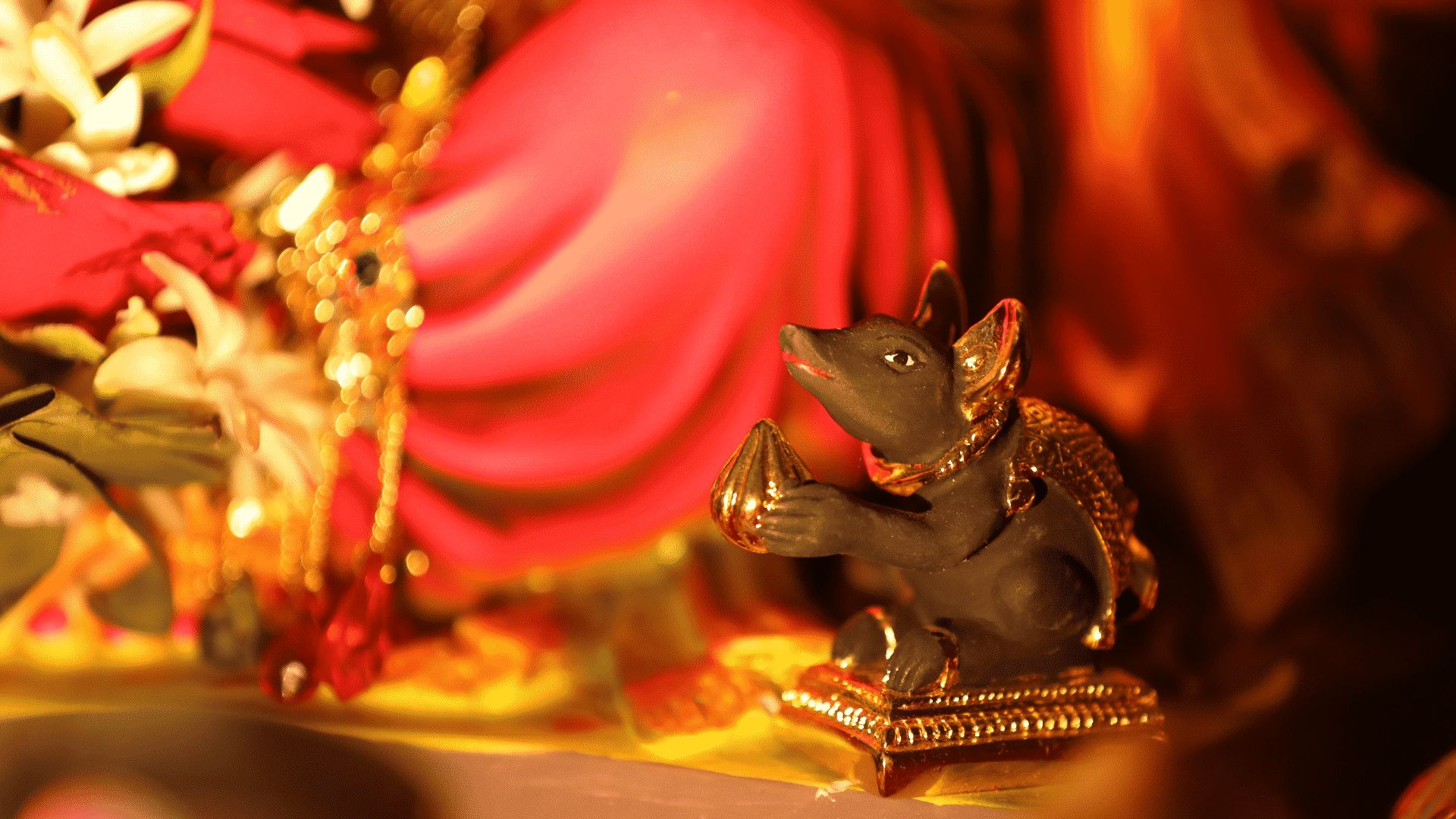What can you learn from Ganesha?

Table of contents
One of the most important gods of Hinduism, a religious philosophy that originated in the Indian subcontinent, Ganesha is also known as Vighneshvara, which means "destroyer of obstacles or difficulties" in the Hindu language.
Ganesha symbolizes the universe and is known as the god of wisdom and fortune. He is possessed of a logical conscience and also represents the full balance between generosity and strength.
Ganesha's image is quite characteristic and you have surely come across it on the internet, in books, or even on T-shirt prints. The deity is portrayed with a human torso, an elephant's head, four arms, and a huge belly. Ganesha is usually depicted sitting down and in the company of a little mouse.
But how to interpret this figure, so well known around the world? And what are the lessons we can learn from Ganesha?
The origin
According to Hindu mythology, Ganesha is the son of Shiva and Parvati. Shiva is the god of destruction, while Parvati is the goddess of love and considered the Supreme Mother.
But she felt very lonely when Shiva was away from home for long periods, so she created Ganesha from slivers of her own skin, and one day she asked her son to watch the house so that no one could enter while she was bathing.
It was then that Shiva appeared and the boy, following his mother's orders, did not let the supreme god pass. Not knowing that this was his son, Shiva cut Ganesha's head off. As soon as Parvati appeared and saw the scene, she became desperate and threatened to destroy the universe.

PRASANNAPiX / Getty Images / Canva
To redeem himself, Shiva ordered that the head of the first creature found, which in this case was an elephant's, a sacred animal in Hindu culture, be placed on the boy. And so Ganesha reappeared as a god half man, half elephant.
Understanding Ganesha's symbology
Ganesha is almost always represented in a similar way, whether in the form of a statue, sculpture, or painting. There are many details that make up his figure, and each one of them is full of very important meanings for Hindu culture. Check out each one of these symbols:
Head and ears
His head and his elephant ears are large for a particular reason. The head symbolizes intelligence, wisdom, and understanding, while the huge ears remind us that we need to listen more to people, and once we can listen and really assimilate the teachings, we will be on the right path to achieve our goals.
The head and the ears also translate the two first steps to self-realization for devotees in Hinduism, the Sravanam and the Mananam, which respectively mean listening and reflecting on the teachings. There is also a detail on Ganesha's forehead: the mark of a trident, which represents Shiva.
Tromba
The deity's curved trunk symbolizes "viveka," which is the ability to discern between that which is eternal and that which is infinite. Moreover, at the same time that the trunk has the strength to fell a tree, it is sensitive enough to carry water to the elephant's mouth.
Through this symbolism, Ganesha teaches us to have some insight to deal with the opposites in our lives, and they are in constant coexistence, like sorrows and joys, or health and sickness.
Prey

Wichatsurin / Getty Images Pro / Canva
See_also: To dream of someone who has already diedIf we look closely, we can notice that Ganesha's fangs are broken, representing the sacrifices we make during life. Each fang also has a little peculiarity. While the left fang symbolizes human emotions, the right fang corresponds to wisdom.
See_also: Learn about the meaning of La Catrina, the Goddess of DeathThese two sides of an individual's personality need to be in constant balance within each of us, just like the duality that exists in the entire universe, like cold and heat, night and day, good and evil.
Belly
His big belly represents something very deep. It shows his capacity to swallow and digest all the obstacles in life, as well as all the teachings he has already assimilated.
Ganesha shows us that we need to go through all the experiences in store for us during life, whether good or bad, after all, what we take away from these experiences is what really matters. We should always look at every moment as learning, and thus overcome every challenge.
Arms
Ganesha has four arms, each one representing a different skill of the subtle body (or energy body): the mind (manas), the intellect (budhi), the ego (ahamkarar), and the consciousness (chitta).
Hands
Like his arms, Ganesha has four hands, and each of them carries some object with a specific meaning.
Upper right hand
In this hand, Ganesha holds an axe, a tool he uses to ward off obstacles. Since he is the god of wisdom, Ganesha also uses the axe to destroy ignorance, the cause of so much evil on Earth.
Upper left hand

DipakShelare / Getty Images / Canva
In his upper left hand, we can observe the lotus flower, which represents the highest goal of human achievement, self-knowledge and the meeting with the "inner self". In this same hand, he also holds a rope, a symbol of strength and which represents the attachments and earthly desires that must be abolished.
Lower right hand
This is the hand directed to the devotee. Positioned in abhaya mudra, a welcoming gesture in Hindu philosophy, the hand turned toward the beholder symbolizes blessings and protection. It is also a way to emanate energy and welcome those who are in search of spirituality.
Lower left hand
Finally, the lower left hand holds a plate of modaka, a typical Indian sweet made with milk and toasted rice. Not surprisingly, it is also Ganesha's favorite treat. This plate symbolizes the peace, satisfaction, and fulfillment that knowledge can bring to people.
The mouse

Nikhil Patil / Getty Images / Canva
There are several versions that explain why Ganesha is always accompanied by a mouse. One of them says that the mouse is the ego, and that before we can control our ego, we must be aware of it. The ego is mainly our desires and our pride.
Another interpretation understands the rat as Ganesha's vehicle and sees the god as knowledge and the rat as the mind. When Ganesha appears riding the rat, this is a representation that consciousness is something much greater and has the power to control the mind.
What do we learn from this deity?
In Hinduism, the deities are recognized from three points of view: the material, the psychic, and the spiritual. Therefore, the divine forces that are present in this religion cover all spheres of life.
Ganesha, as well as the other deities, invites us to look inside, to seek self-knowledge and to reflect about the world we live in. Our mind, as well as everything in nature, can be very unstable. Ganesha is the wisdom that commands nature and it is he who leads and protects all beings.
You may also like
- Ganesha Maha Mantra: Ganesha's Mantra
- To Dream of an Elephant
- Twin elephants born in Africa, see the video of this rarity
- How to find "God" in your Life?
- The world of Yoga for children in books
An interesting fact about the elephant is that this animal, because of its size, takes the lead and opens paths for other animals in forests where the forest is closed. This characteristic translates perfectly well the god of obstacles. Ganesha is venerated by his devotees especially at the beginning of a new journey.
When someone is about to begin a new phase in his or her life, be it personal or professional, it is essential to make a ritual with offerings to Ganesha, in order to attract prosperity, success, and happiness in the future project.

